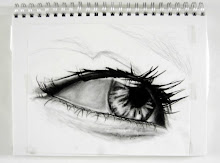Clair de Lune, from Claude Debussy's Suite bergamasque (1890).
From Wikipedia:
Beginning in the 1890s, Debussy developed his own musical language largely independent of Wagner's style, colored in part from the dreamy, sometimes morbid romanticism of the Symbolist Movement. Debussy became a frequent participant at Stéphane Mallarmé's Symbolist gatherings, where Wagnerism dominated the discussion. In contrast to the enormous works of Wagner and other late-romantic composers, however, around this time Debussy chose to write in smaller, more accessible forms. The Suite bergamasque (1890) recalls rococo decorousness with a modern cynicism and puzzlement. This suite contains one of Debussy's most popular pieces, Clair de Lune. Debussy's String Quartet in G minor (1893) paved the way for his later, more daring harmonic exploration. In this work he utilized the Phrygian mode as well as less standard scales, such as the whole-tone, which creates a sense of floating, ethereal harmony. Debussy was beginning to employ a single, continuous theme and break away from the traditional A-B-A form, with its restatements and amplifications, which had been a mainstay of classical music since Haydn.
From Wikipedia:
Beginning in the 1890s, Debussy developed his own musical language largely independent of Wagner's style, colored in part from the dreamy, sometimes morbid romanticism of the Symbolist Movement. Debussy became a frequent participant at Stéphane Mallarmé's Symbolist gatherings, where Wagnerism dominated the discussion. In contrast to the enormous works of Wagner and other late-romantic composers, however, around this time Debussy chose to write in smaller, more accessible forms. The Suite bergamasque (1890) recalls rococo decorousness with a modern cynicism and puzzlement. This suite contains one of Debussy's most popular pieces, Clair de Lune. Debussy's String Quartet in G minor (1893) paved the way for his later, more daring harmonic exploration. In this work he utilized the Phrygian mode as well as less standard scales, such as the whole-tone, which creates a sense of floating, ethereal harmony. Debussy was beginning to employ a single, continuous theme and break away from the traditional A-B-A form, with its restatements and amplifications, which had been a mainstay of classical music since Haydn.
The Piano Sonata No. 14 in C-sharp minor "Quasi una fantasia", Op. 27, No. 2, by Ludwig van Beethoven, also popularly known as the "Moonlight" Sonata.
From Wikipedia:
The work was completed in 1801 and rumored to be dedicated to his pupil, 17-year-old Countess Giulietta Guicciardi, with whom Beethoven was, or had been, in love. The name "Moonlight" Sonata derives from an 1832 description of the first movement by music critic Ludwig Rellstab, who compared it to moonlight shining upon Lake Lucerne.[4][1]
Beethoven included the phrase "Quasi una fantasia" (Italian: Almost a fantasy)[5] in the title partly because the sonata does not follow the traditional sonata pattern where the first movement is in regular sonata form, and where the three or four movements are arranged in a fast-slow-[fast]-fast sequence.
The work is possibly the most familiar of all Beethoven's piano sonatas, and is widely performed and recorded.
From Wikipedia:
The work was completed in 1801 and rumored to be dedicated to his pupil, 17-year-old Countess Giulietta Guicciardi, with whom Beethoven was, or had been, in love. The name "Moonlight" Sonata derives from an 1832 description of the first movement by music critic Ludwig Rellstab, who compared it to moonlight shining upon Lake Lucerne.[4][1]
Beethoven included the phrase "Quasi una fantasia" (Italian: Almost a fantasy)[5] in the title partly because the sonata does not follow the traditional sonata pattern where the first movement is in regular sonata form, and where the three or four movements are arranged in a fast-slow-[fast]-fast sequence.
The work is possibly the most familiar of all Beethoven's piano sonatas, and is widely performed and recorded.






No comments:
Post a Comment